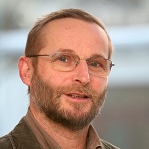Understanding the Ecology of Restored Fen Peatlands for Protection and Sustainable Use
A special issue of Soil Systems (ISSN 2571-8789).
Deadline for manuscript submissions: closed (6 January 2020) | Viewed by 28262
Special Issue Editors
Interests: microbial sources of N2O; cycling of N and P; grassland ecology; stable isotopes
Interests: soil organic matter; phosphorus; nutrient cycling; soil amendments; contamination; remediation; biological soil crusts
Special Issue Information
Dear Colleagues,
The WETSCAPES Conference (https://www.wetscapes.de/conference/) will be held in Rostock, Germany, 10–13 September 2019. Authors of soil-related papers presented at the Conference are invited to submit extended versions of their work to the Special Issue for publication.
Peatlands are the most effective terrestrial carbon stock on our planet. However, many peatlands have been artificially drained for agricultural and forestry purposes, or peat extraction. Drainage leads to decomposition of the peat, soil compaction, and, thus, peatland subsidence. Further, artificially drained peatlands cause disproportionally high greenhouse gas emissions.
Rewetting peatlands may solve many of the problems related to artificial drainage but is rarely an option because of loss of agricultural land. New management strategies in which the rewetting of the peatland is combined with an agricultural usage, the so-called 'paludiculture', might be an alternative in sustainable landscape planning. A mosaic of paludiculturally used peatlands with peatlands restored primarily for nature conservation purposes is the future of multifunctional and sustainable peatland landscapes and the vision of 'WETSCAPES'.
As we are just at the beginning of implementing paludicultures, understanding of the biogeochemistry and ecology of these novel ecosystems is still largely lacking. This Special Issue, based on presentations given at the WETSCAPES Conference, aims to contribute to a better understanding of the ecosystem functioning and the underlying processes. This understanding is the basis for a sustainable use of wet landscapes.
Prof. Dr. Nicole Wrage-Mönnig
Prof. Dr. Peter Leinweber
Guest Editors
Manuscript Submission Information
Manuscripts should be submitted online at www.mdpi.com by registering and logging in to this website. Once you are registered, click here to go to the submission form. Manuscripts can be submitted until the deadline. All submissions that pass pre-check are peer-reviewed. Accepted papers will be published continuously in the journal (as soon as accepted) and will be listed together on the special issue website. Research articles, review articles as well as short communications are invited. For planned papers, a title and short abstract (about 100 words) can be sent to the Editorial Office for announcement on this website.
Submitted manuscripts should not have been published previously, nor be under consideration for publication elsewhere (except conference proceedings papers). All manuscripts are thoroughly refereed through a single-blind peer-review process. A guide for authors and other relevant information for submission of manuscripts is available on the Instructions for Authors page. Soil Systems is an international peer-reviewed open access quarterly journal published by MDPI.
Please visit the Instructions for Authors page before submitting a manuscript. The Article Processing Charge (APC) for publication in this open access journal is 1800 CHF (Swiss Francs). Submitted papers should be well formatted and use good English. Authors may use MDPI's English editing service prior to publication or during author revisions.
Keywords
- Greenhouse gas exchange
- Element cycling and export
- Peatland bio-hydrology
- Plant growth and decomposition
- Microbial pathways
- Remote sensing






